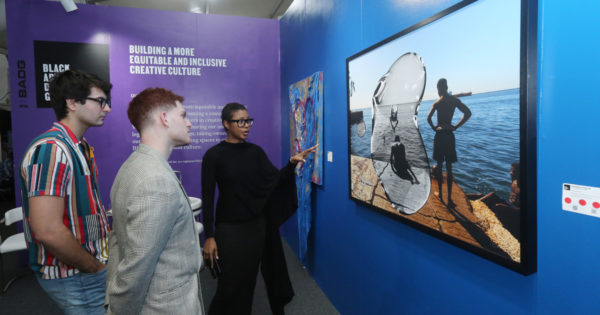
Source: news.google.com
“Subdued” is not a typical description associated with Art Basel Miami. But this year, the twentieth time since the city first hosted the world festival of art and technology, that’s the word that fits.
The wildly imaginative community representing luxury brands, contemporary art and emerging technology that converges on Miami in late November is not known for restraint and practicality. But as talk of crypto winter spread as the 2021 NFT hype cooled, the mood in Miami last week was much more realistic.
And that’s why this Art Basel Miami may be more meaningful to brands, investors and techies compared to the wild party atmosphere of recent years. If you missed Art Basel, don’t worry: the transformative technologies that were around are about to catch up with you before you know it.
The trick is knowing what to do with these new tools once you get the hang of them. Art Basel 2022 was not the year of shiny objects. Rather, what was most defining this year was the community and how they shaped and expanded the use cases for tools that have alternately inspired and mystified the general public.
Yes, there was the usual talk of artificial intelligence, of the Lensa AI portraits that have flooded your Instagram feeds. And we’re all rightfully captivated by ChatGPT’s astonishingly natural typing and query responses. Both examples reflected the trend observed in Art Basel: the idea of identity as a value that can be possessed and reworked depending on the context.
The community that emerged in Miami was not just a mix of pioneers and rising art stars. It is the influencers and creators who will usher in web3.
The culture shapers
Take a look at how everyone has been using Lensa and ChatGPT – they are all stuck in a web2 context. Experience hasn’t caught up with technology: our collective web2 mindset remains locked. That freezes the potential use cases. And that is the reason for the general public’s persistent disappointment with NFTs, QR codes and virtual reality.
In the past two years, brands have turned marketing over to influencers and creators. Brands and platforms must bring more advanced technology to these culture makers. These individuals came together in a collective spirit and defined the Art Basel Miami experience by creating a community.
Attendees were swept away in their wake. Followers also quickly became part of the community, fueling new ways of looking at technology that would otherwise languish.
Take NFTs. Most of the gatherings at Art Basel Miami were token events. No one thought twice as an entry requirement. It felt completely natural and obvious to use NFT as the key to access an experience. This new form of loyalty was accepted by all. People were airdropping invitations everywhere as if they were physical tickets. It was flawless and natural.
It is true that the chips did not always work. But there is always a setback. The point is that the idea clicked and a new custom of events was born, and with it a deeper sense of community was born.
The community accepted the tokens as a form of identity. Not just identity verification, although that’s a web2 aspect that makes sense in this case.
identity evolves
There was a lot of talk at Art Basel Miami about the future of digital identity and avatars. Those lines began to blur with gaming and instant messaging. Apple’s embedding of emoji into a 3D avatar in 2018 meant you could have an animated representation of yourself. His chosen character would be mirrored with a cartoon version of his face, a favorite animal or symbol. Regardless of the choice, the avatar was an artistic statement about who you present yourself to.
With consumers increasingly expecting to own their data, new questions have arisen in this community of culture shapers: What does your persona ownership structure look like? You can change it? How do you negotiate with him?
A community is sustained by the reflections and self-expressions of its members. But what does community mean when everyone can change their representation whenever they want?
The intersection of art and commerce is ultimately the arbiter.
Expression is experience.
Wear slippers. There is a long-standing subculture of sneakerheads. They line up when there’s a new release they need to add to their collection. That line is a community. That collective desire represents a communal self-expression. The individual and the group are united.
One of the first major runs of digital collectibles was based on sneakers. People have hundreds of pairs of sneakers because they want to represent themselves differently on different occasions and in different situations.
Imagine the use cases for both a physical sneaker collection and its digital twin. There are a lot of different use cases as to where you could take it. And that sneaker community is going to create those use cases. It’s up to the brands to follow the community’s directions on where to go. Brands that know how to support their loyal communities always win.
It wasn’t all new world glory at Art Basel Miami. They asked me several times for business cards. I never wear them. That led to some brief awkward moments. But it was a perfect example of the natural tension between the old world and the new world. Seeing it still play out even in Art Basel, where events are controlled by tokens, clearly sets the challenge for web3.
A business card is an old form of avatar. It says who you are, it says where you belong, it literally explains your identity to whoever you share it with. It is a form of connection. Thinking of virtual items like NFTs in that way provides a lit path from pre-web to web2 to web3. We only get there when everyone recognizes the coin for identification and entry. And this is how a community is created.
Read More at news.google.com

